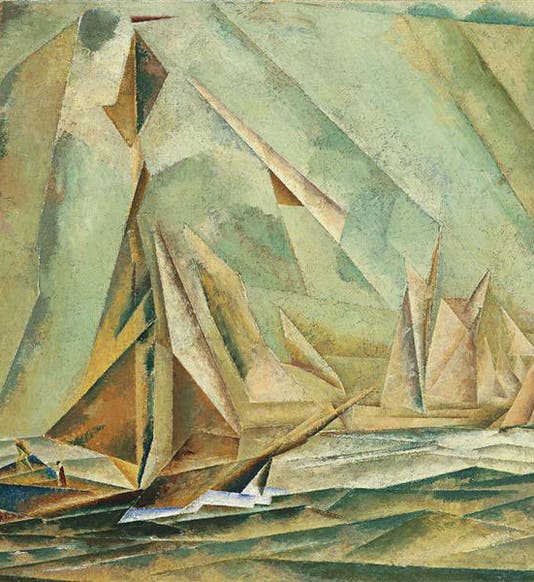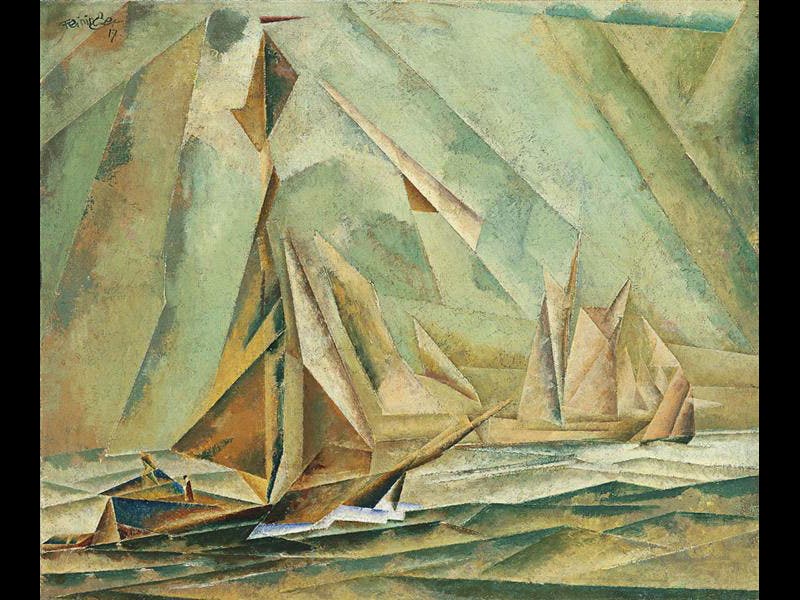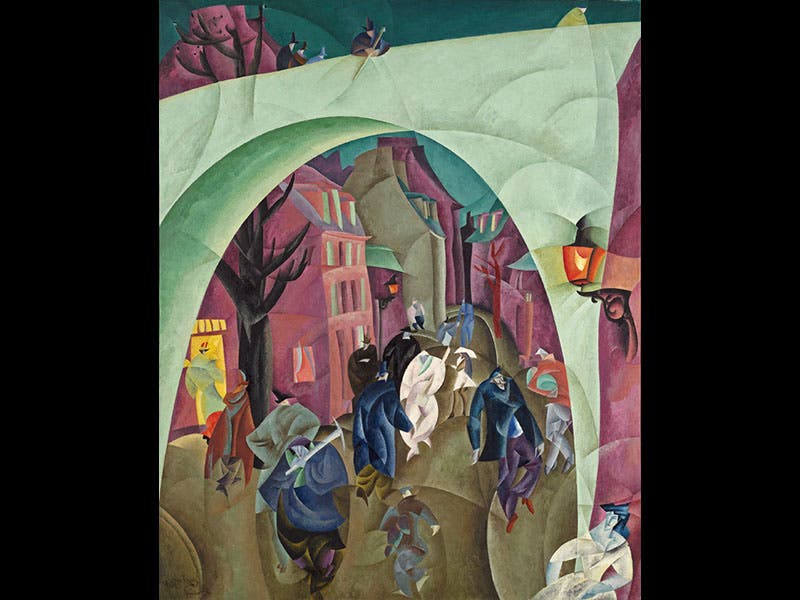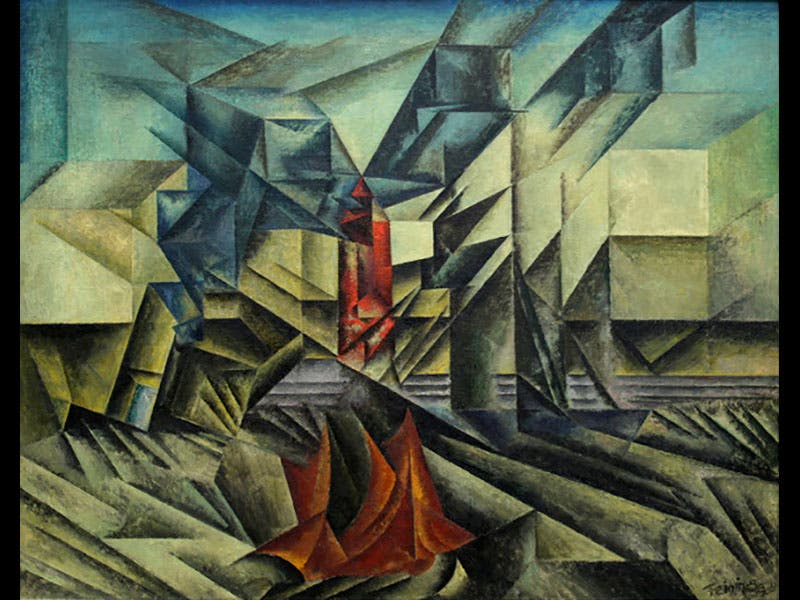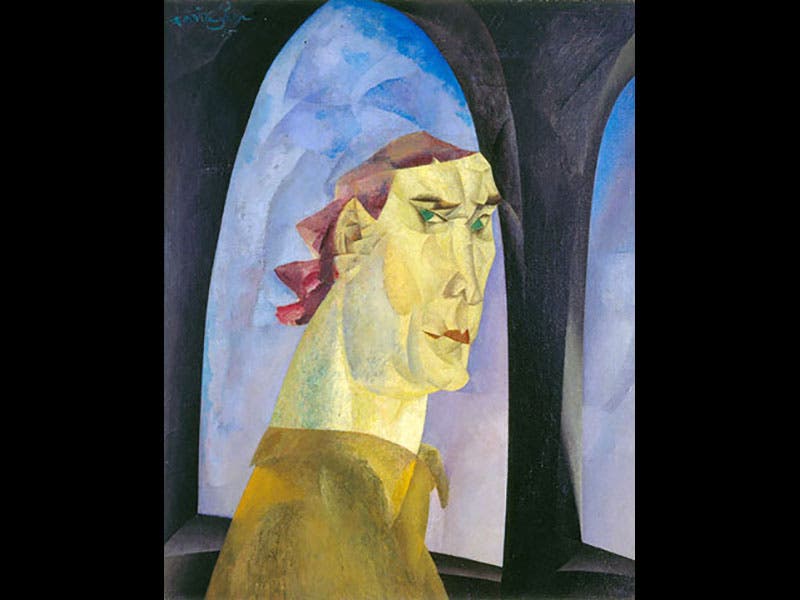Scientist of the Day - Lyonel Feininger
Sometimes it is well to remind ourselves that scientists and engineers were not the only ones trying to bring order to the world of the modern in the early 20th century. Artists were just as eager to find effective ways to capture a landscape of high-rise buildings, powerful locomotives, and ships at sea. The Italian Futurists were fascinated by speed and steam, the Cubists by the dimensions of space, and the German Expressionists by the angst and sometimes terror evoked by modern civilization. Lyonel Feininger was one of those German Expressionists, but prone to regard the world with more whimsy than terror. He was actually born in New York City, on July 17, 1871. But he travelled to Germany to study and remained there until forced to flee Germany by Hitler in 1937, when he returned to the U.S.
Feininger was a man of many talents--a well-trained musician and composer, and an accomplished cartoonist and caricaturist. But we remember him most for his paintings of ships, skyscrapers, and cathedrals, and the scurrying people who populate such landscapes. He had his artistic eyes opened in 1907, when he encountered Cubism for the first time, and elements of that school, especially the desire to break down surfaces into facets and prisms, can be found in nearly all his work. But there is often a human element in his paintings that pulls them back from abstraction and makes more emotionally appealing than many Expressionist works. One of his most familiar paintings is Green Bridge II (1916), in the North Carolina Museum of Art, where Feininger merged his skill at caricature with a wonderfully prismatic architectural space, while displaying an unusual sense of color (second image). This painting was featured on the cover of the exhibition catalog, Lyonel Feininger: At the Edge of the World, when the Whitney Museum of American Art mounted a retrospective of his work in 2011.
Feininger was also fond of ships at sea, favoring sailing craft rather than massive steamships, perhaps because they yielded well to his prismatic approach. We see above his Ships (1917), in the Museo Thyssen-Bornemisza, Madrid (first image). Another painting with a technological focus is Harbor Mole (1913), in the Carnegie Museum of Art, which depicts a human-built breakwater under attack by winds and waves (third image). And for the many readers who live in the vicinity of our Library, we are pleased to point out that there is an exceptional Feininger painting hanging in the newly refurbished Bloch Galleries of the Nelson-Atkins Museum of Art in Kansas City. It is titled Gaberndorf II (1924) and depicts the Church of St. Albanus in the Gaberndorf district of Weimar.
Feininger was nice enough to paint a self-portrait utilizing his unmistakable style (fifth image). It is owned by the Sarah Campbell Blaffer Foundation in Houston. And finally, just because we have one more image slot available, we give you Newspaper Readers (1909, private collection, sixth image). Substitute smart phones for newspapers and you would capture perfectly a 21st-century pedestrian rush hour in any city in the world, although the maniacal expressions of the faces of the crowd would probably, and unfortunately, be lacking.
Dr. William B. Ashworth, Jr., Consultant for the History of Science, Linda Hall Library and Associate Professor, Department of History, University of Missouri-Kansas City. Comments or corrections are welcome; please direct to ashworthw@umkc.edu.

